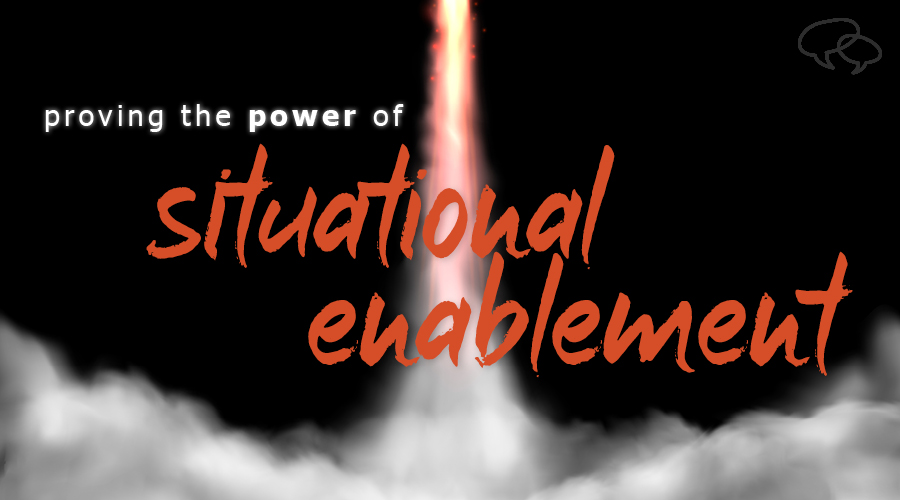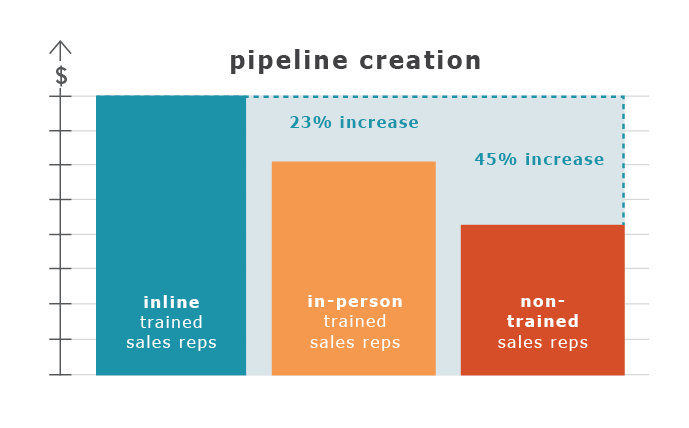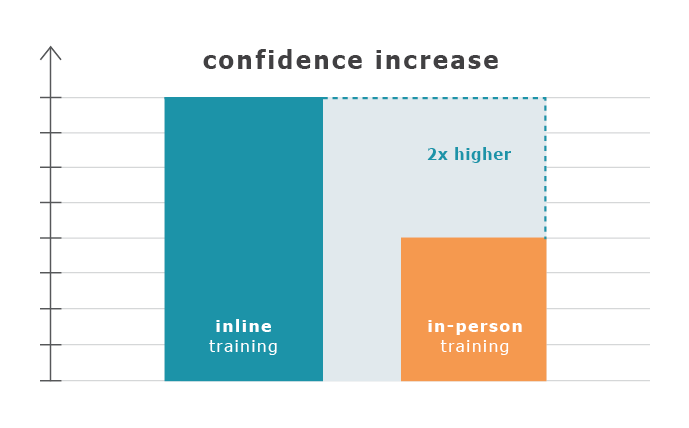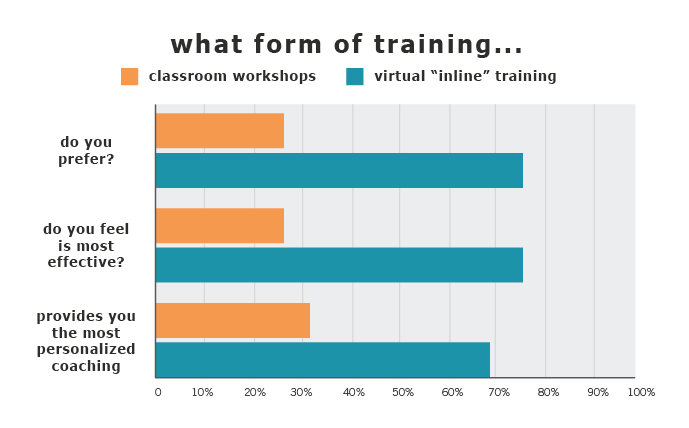
Situational Enablement has tremendous benefits for your organization. Imagine being able to ready your sales force to respond to urgent threats or opportunities in weeks, instead of waiting months.
But realizing the power of Situational Sales Enablement requires a new approach to training and coaching your salespeople on new skills. And it hinges on what we call Inline Training—a flexible, on-demand training model that works in line with your sales team’s day-to-day workflow.
Inline Training Versus Live Classroom Training
In a controlled field test with a Fortune 250 software client, we compared the effectiveness of Inline training versus live classroom training and “stand and deliver” practice.
The field test used comparable sales teams, in the same market segment, over the same period of time, and exposed them to the same training concepts. The only difference was whether the training was delivered live or using our Inline training model.
The results? Sales teams who completed Inline training had greater pipeline increases, similar Annual Contract Value, and twice the boost in confidence levels when engaging executive decision-makers, compared with those who attended live classroom training.

Another client surveyed their participating sales force and discovered that reps preferred the Inline training approach over classroom training nearly four-to-one for being more effective and providing more personalized coaching.
Fluency Coaching: Deliberate Practice, Better Coaching, Greater Proficiency
Inline training is statistically more effective than the live classroom, and participants prefer the experience four-to-one. So, what’s the secret?
In a classroom setting, sales reps don’t receive the one-on-one coaching necessary to fully develop their new skills. Only a few participants get to present in front of the group. However, because of time limits, no one gets the detailed feedback needed to practice, enhance, or become confident in their delivery.
By combining Fluency Coaching and online training modules, the Inline training model ensures your reps submit practice assignments that are reviewed and graded by an expert coach using a rubric. Every participant receives tailored feedback on their practice recordings, so they know precisely how they can individually improve.
Plus, when reps know they’re about to be judged on their delivery, they’re more motivated to get it right. In fact, the average learner completes about six practice runs before hitting the submit button.
All of this is reinforced by top-tier examples of great delivery from their peers, so they know exactly what good looks like, and what qualities make those performances stand out.
The Power of Situational Sales Enablement
Planning sales training and support based on a yearly schedule won’t help you tackle your biggest business challenges as they come up. The speed at which you can create and share new messages, content, and skills can determine whether you stay ahead or lag behind.
Market changes, competitive moves, and business strategy shifts don’t fall neatly on a calendar. Responding to these urgent needs requires flexible, responsive Situational Enablement that you can deploy in weeks—not months or years.
Inline training and Fluency Coaching make it possible. And, as you see from these field test results, it’s proven to be as effective, if not more effective, than live classroom training.
Learn More About Situational Enablement
In this blog series, I showed you what it looks like to execute Situational Sales Enablement at your company.
Watch our on-demand webinar, The Power of Situational Enablement, to learn more about this new model for training and enabling your team.

